#Sales force automation solutions
Explore tagged Tumblr posts
Text
Sales Force Automation Solutions
If you are seeking to enhance your sales strategy, explore our Sales Force Automation Solutions! Streamline tasks, efficiently manage leads, and drive productivity. Our intuitive technology empowers your team with essential tools for success. Experience a revolution in your sales approach and unlock a pathway to success. Contact us today for more information.
0 notes
Text
Discover the power of Salesforce Workflow Automation to revolutionize your sales processes. With our comprehensive sales force automation solutions, you can automate repetitive tasks, optimize lead management, and streamline your sales team's workflows. Boost productivity and efficiency with our cutting-edge sales automation platform. Unlock the full potential of your sales team and drive revenue growth with Salesforce Workflow Automation today.
0 notes
Text
Unlocking Success: The Sigzen Technologies Approach to Industry Solutions
In the dynamic and constantly evolving realm of contemporary business, the endeavor to sustain a competitive advantage requires innovative solutions that not only adjust to changes but also foresee the requirements of various industries. In this context, Sigzen Technologies stands out as a guiding force, delivering not only cutting-edge but paradigm-shifting ERPNext services that fundamentally…

View On WordPress
#Business Transformation#ERP for Industry#ERPNext Solutions#Industry Solutions#Sales Force Automation#Sigzen Technologies
2 notes
·
View notes
Text
How Can Increase Revenue and Profit Margins with Sales Automation Software
Every business is constantly looking to raise revenue and improve profit margins smartly. One such wonderful tool is Field Sales Automation Software. Whether it is for a small group of sales reps or an entire sales department, having an automated sales process can boost faster conversions, fewer errors, and happier clients.
The sales automation means, and how does it associate with your bottom line. Let's have a glimpse.
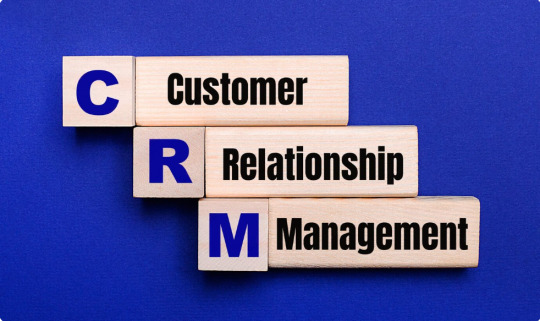
Understanding Field Sales Automation Software
Field Sales Automation Software is a digital solution used to automate and streamline a business's sales process, from lead generation to the onboarding of customers. It is particularly relevant to companies with field sales teams that operate in various territories and deal directly with the client.
The software typically integrates the following tools:
Lead and opportunity management
Task scheduling and reminders
Route planning and live tracking
Automated follow-up
Sales performance analytics
Integrating sales automation CRM
In this way, dispatchers will spend more time selling than managing spreadsheets or adjoining tasks.
How Does It Help Boost Revenue?
Here are some points describing how using Field Sales Automation Software directly influences revenue growth:
1. Shorter Sales Cycles
With automated follow-ups and real-time updates, each lead around the corner is pursued. Sales representatives may close more quickly by answering questions first when they have email templates and instant alerts at their removal.
2. Better Lead Management
Rather than manually tracking leads, this software organizes them automatically. It helps prioritize high-potential leads and reduces the chances of being sidelined toward valuable prospects.
3. Smarter Sales Insights
Supplied with integrated dashboards and reporting, sales managers can tell what works and what does not work. Thereafter, this should affect the sales strategies, the distribution of tasks wisely, and the development of team performance.
4. More Time for Selling
Automating repetitive operations gives your sales staff increased availability to do what they do best—sell! This additional time is then translated into more client interactions, demos, and, ultimately, closed deals.
Improve Profit Margins with Smart Automation
Increasing profits isn't only about increasing sales but also about cutting costs and leveraging every sales effort. Here's how Field Sales Automation Software improves your profit margin:
Reduces manual errors: The best thing is that it minimizes manual errors. With automation, data accuracy in reports, quotations, and contracts is guaranteed.
Cuts down admin work: Less time for repetitive processes results in fewer labour costs.
Optimizes routes: Route planning increases productivity and minimizes travel expenses.
Tracks expenses: Expense-tracking tools are often incorporated into the software, helping manage field budgets better.
Automating processes and cutting down on inefficiencies results in reduced expenses and increased profitability.
Why Small Businesses Should Not Ignore This
Imagine that the automated sector is reserved for large businesses. Well, think again. Sales Automation Software for small businesses has been designed to help those growing companies scale their operations without needing a large workforce.
Key Benefits for Small Businesses:
More affordable alternatives (you can even find Sales Automation Software FREE versions)
Easy to install and use—no in-house IT staff is needed
Scalable as your company grows
Enables smaller teams to successfully compete against larger ones.
Whether you employ a couple of sales reps or work alone, automating your sales process puts you on the fast track to success.
Features of Sales Automation Software
Many Sales Automation Software are there but not all offer the same facilities. The following are the most important characteristics to consider while evaluating the best sales automation software:
Mobile Application for field reps
Real-time lead tracking
Geo-tagging and live location tracking
Tailor-made dashboards and reports
CRM integration
Offline capacity
Easily usable.
These features keep your sales game on top even when moving.
Sales Automation CRM: A Winning Combo
When your Field Sales Automation Software integrates well with your sales automation CRM the magic starts. Because it ties up your entire customer journey-from the first touchpoint to conversion and follow-up.
With this seamless integration, you have:
No need for duplicate entries
There is complete alignment between the sales and marketing teams.
You have a full 360° view of every customer.
Such an approach promotes better customer experience and repeat sales- two main factors for revenue growth over time.
Real-Life Example: From Manual to Profitable
Mid-sized FMCG distribution business having 20 field sales agents. Pre-automated, manages leads through spreadsheets, schedules follow-ups manually, and invites team members through phone calls for any check-ins about their whereabouts.
The transition to a Field Sales Automation Software now means:
Your reps check into client meetings using the app
They get instant updates on daily sales activity
Submit and approve all expense reports digitally
30% shorter sales cycle
Overall revenue increased in just six months by 25%.
This is real life, the actual power of smart sales automation.
Is There a Free Version Available?
Yes! Look for any sales automation software free trial if you just want to start testing the waters. These usually come with basic features like lead management, task scheduling, and limited analytics.
As your business progresses, you will then be able to upgrade to premium plans that provide more powerful tools like real-time tracking, complete CRM integrations, and customized reporting to make your business even more productive.
Let TrackOlap Drive Your Sales Success
In reality, this is an age where time translates into money. At the same time, people expect a higher standard from customers in terms of sales today. Manual processing of all these transactions does not do the trick anymore. It would set up your business for real measurable progress rather than just making the job simpler for your sales team.
Promoting Business Growth with TrackOlap's Field Sales Automation Software, the all-in-one package that brings sales operations into perfect sync and speeds up closing deals to maximize revenue. Lead Tracking, Real-Time Field Monitor, and many other features empower your sales team with powerful sales selling tools. Trusted by thousands of companies, it's time to automate your sales journey with ease. To see the sales automation of the future, visit TrackOlap right now!
#field Sales Automation Software#sales automation CRM#Sales Automation Software#Best Sales Automation Software#Sales Automation Software for small business#sales automation#field sales automation#sales automation solution#sales automation platform#business automation software#field force automation
0 notes
Text
Human AI Force Review: Revolutionizing Business with Lifelike AI Professionals
In today’s fast-paced digital world, businesses are constantly seeking innovative ways to streamline operations, enhance customer engagement, and boost profitability. Enter Human AI Force, a groundbreaking platform that promises to transform the way businesses operate by creating and deploying lifelike AI-powered professionals. From coaching and marketing to customer service and HR, Human AI Force claims to handle it all. But does it live up to the hype? Let’s dive in and explore what this platform offers, its strengths, and whether it’s worth your investment.

What is Human AI Force?
Human AI Force is an all-in-one platform that allows users to create, train, and deploy AI-powered human-like agents capable of handling a wide range of tasks. These AI agents can be customized to mimic your appearance, voice, and personality, making them an extension of your brand. Whether you need a sales expert, a customer service representative, or a marketing assistant, Human AI Force claims to deliver a seamless, human-like experience without the need for technical expertise.
Key Features and Benefits
Lifelike AI Agents: Human AI Force stands out with its ability to create AI agents that look, sound, and act like real humans. With voice cloning, accent customization, and emotional intelligence, these agents can engage customers in a way that feels personal and authentic.
No Tech Skills Required: One of the platform’s biggest selling points is its ease of use. You don’t need to be a tech wizard to create and deploy AI agents. The process is intuitive, with drag-and-drop functionality and pre-designed templates for various niches.
24/7 Availability: Imagine having a team of professionals working around the clock without breaks. Human AI Force enables you to deploy AI agents that can engage customers, generate leads, and close deals 24/7, ensuring you never miss an opportunity.
Multilingual Capabilities: Break language barriers with AI agents that can communicate in any language. This feature is a game-changer for businesses targeting global audiences.
Customizable and Trainable: The platform allows you to train your AI agents using URLs, PDFs, or documents, turning them into experts in sales, coaching, consulting, and more. You can also customize their appearance, tone, and behavior to align with your brand’s identity.
Real-Time Analytics: Track engagement, optimize conversions, and set specific goals for your AI agents using the platform’s real-time analytics dashboard.
Commercial License: Human AI Force offers a free commercial license, allowing you to create and sell custom AI agents to clients for 1,000+perproject.YoucanalsorentoutyourAIagentsfor1,000+perproject.YoucanalsorentoutyourAIagentsfor23+/hour, turning them into a 24/7 profit machine.
One-Click Embedding: Easily embed AI agents on websites, stores, funnels, blogs, or any platform with just one click.
No Monthly Fees: Unlike many SaaS platforms, Human AI Force requires no monthly payments, API costs, or hidden fees, making it a cost-effective solution for businesses of all sizes.
Pros
Ease of Use: The platform is beginner-friendly, requiring no technical skills.
Cost-Effective: No monthly fees or hidden costs make it an affordable solution.
Versatility: Suitable for a wide range of industries and use cases.
Profit Potential: The commercial license opens up opportunities for generating passive income.
Human-Like Interaction: The lifelike AI agents enhance customer trust and engagement.
Cons
Learning Curve: While the platform is easy to use, maximizing its potential may require some time and experimentation.
Limited Free Trial: There’s no free trial, so users must purchase the front-end product to test the platform.
Dependence on Internet: As with most AI tools, a stable internet connection is required for optimal performance.
Who is Human AI Force For?
Human AI Force is ideal for:
Entrepreneurs and small business owners looking to automate repetitive tasks.
Marketers and coaches who want to scale their operations without hiring additional staff.
Agencies and freelancers seeking to offer AI-powered services to clients.
Anyone interested in creating a passive income stream by renting or selling AI agents.
Final Verdict
Human AI Force is a revolutionary platform that brings the power of lifelike AI professionals to businesses of all sizes. Its ease of use, affordability, and versatility make it a compelling choice for anyone looking to enhance customer engagement, streamline operations, and boost profitability. While there’s a slight learning curve, the potential ROI far outweighs the initial effort required.
If you’re ready to take your business to the next level and stay ahead of the competition, Human AI Force is definitely worth considering. With its ability to create 24/7 autonomous AI agents that work tirelessly to grow your brand, this platform is a game-changer in the world of AI-powered business solutions.
Rating: 9/10 Human AI Force delivers on its promises, offering a powerful, user-friendly, and cost-effective solution for businesses looking to leverage AI technology. Whether you’re a solopreneur or a large enterprise, this platform has the potential to transform the way you operate.
Click Here To Grab Human AI Force Now >>
#Human AI Force review#Human AI Force#AI-powered workforce#AI human cloning software#AI customer service agents#AI sales automation#Best AI marketing tool#AI chatbot for business#AI-powered lead generation#AI coaching software#AI for customer engagement#AI affiliate marketing tool#AI business automation#AI-driven HR solutions
0 notes
Text
How can SFA Solutions Help Improve the Efficiency of a Construction Company?
SFA solutions can help construction companies work on their productivity in multiple ways. The following are a few models, they can automate and smooth out the sales process, from lead age to shutting deals, diminishing the time and exertion expected to physically oversee deals exercises. SFA Software can likewise further develop correspondence and joint effort between colleagues, considering better coordination and quicker independent direction.
To know more information here: https://sfasoftware.bcz.com/2023/08/08/boost-your-construction-companys-efficiency-with-sales-force-automation-software-heres-why-you-should-choose-it/
0 notes
Text
#rudramsoft#Direct selling software#MLM software solution#Network marketing software#Party plan software#Direct sales CRM#Commission tracking software#Multi-level marketing software#Direct selling management software#Compensation plan software#Direct sale automation#Distributor management software#Sale force management software#Direct selling platform#MLM compensation plan software#Direct sale tracking software#Party plan mlm software#MLM lead management software#Network marketing CRM#Direct selling analytics#MLM Business software
1 note
·
View note
Text
Field Force Automation (FFA) or Sales force Automation solutions have emerged in response to the dynamic business operations landscape and the requirement for effective management of field force activities, sales monitoring, and order management. Explore the benefits of Field Force Automation (FFA) and Sales Force Automation (SFA) in our comprehensive guide. Improve efficiency, streamline processes, and enhance your workforce productivity.
#field force automation#field force automation solution#sales force automation#field sales automation
0 notes
Text
Accelerate the growth of your Business with ESS's Sales Force Automation App
In today's competitive business landscape, it's more important than ever to have a sales team that is firing on all cylinders. ESS's Sales Force Automation App can help you do just that. Our app provides a comprehensive suite of features that can help you streamline your sales process, improve productivity, and close more deals.
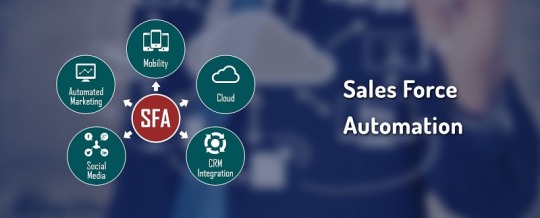
Sales Force Automation Mobile App helps enterprises to digitally manage their sales force and operations from anywhere. Eastern Software Systems has extensive experience in developing custom digital solutions for enterprises of all scales, helping them to embark on their digital transformation journey.
#Best SFA mobile App#Mobile SFA App#Mobile Sales Force Automation App#Mobile Sales Force Automation Solution#Mobile SFA#Mobile Sales Force Automation Solutions#Sales Force Automation Software#Sales Force Automation Systems#sales force mobile app#app for sales tracking#SFA Mobile App#Sales Force Automation#sfa app for field sales#sfa application#mobile sales force automation application#sfa apps#mobile sfa solution#mobile based sales force automation app
0 notes
Text
The enshittification of garage-door openers reveals a vast and deadly rot

I'll be at the Studio City branch of the LA Public Library on Monday, November 13 at 1830hPT to launch my new novel, The Lost Cause. There'll be a reading, a talk, a surprise guest (!!) and a signing, with books on sale. Tell your friends! Come on down!

How could this happen? Owners of Chamberlain MyQ automatic garage door openers just woke up to discover that the company had confiscated valuable features overnight, and that there was nothing they could do about it.
Oh, we know what happened, technically speaking. Chamberlain shut off the API for its garage-door openers, which breaks their integration with home automation systems like Home Assistant. The company even announced that it was doing this, calling the integration an "unauthorized usage" of its products, though the "unauthorized" parties in this case are the people who own Chamberlain products:
https://chamberlaingroup.com/press/a-message-about-our-decision-to-prevent-unauthorized-usage-of-myq
We even know why Chamberlain did this. As Ars Technica's Ron Amadeo points out, shutting off the API is a way for Chamberlain to force its customers to use its ad-beshitted, worst-of-breed app, so that it can make a few pennies by nonconsensually monetizing its customers' eyeballs:
https://arstechnica.com/gadgets/2023/11/chamberlain-blocks-smart-garage-door-opener-from-working-with-smart-homes/
But how did this happen? How did a giant company like Chamberlain come to this enshittening juncture, in which it felt empowered to sabotage the products it had already sold to its customers? How can this be legal? How can it be good for business? How can the people who made this decision even look themselves in the mirror?
To answer these questions, we must first consider the forces that discipline companies, acting against the impulse to enshittify their products and services. There are four constraints on corporate conduct:
I. Competition. The fear of losing your business to a rival can stay even the most sociopathic corporate executive's hand.
II. Regulation. The fear of being fined, criminally sanctioned, or banned from doing business can check the greediest of leaders.
III. Capability. Corporate executives can dream up all kinds of awful ways to shift value from your side of the ledger to their own, but they can only do the things that are technically feasible.
IV. Self-help. The possibility of customers modifying, reconfiguring or altering their products to restore lost functionality or neutralize antifeatures carries an implied threat to vendors. If a printer company's anti-generic-ink measures drives a customer to jailbreak their printers, the original manufacturer's connection to that customer is permanently severed, as the customer creates a durable digital connection to a rival.
When companies act in obnoxious, dishonest, shitty ways, they aren't merely yielding to temptation – they are evading these disciplining forces. Thus, the Great Enshittening we are living through doesn't reflect an increase in the wickedness of corporate leadership. Rather, it represents a moment in which each of these disciplining factors have been gutted by specific policies.
This is good news, actually. We used to put down rat poison and we didn't have a rat problem. Then we stopped putting down rat poison and rats are eating us alive. That's not a nice feeling, but at least we know at least one way of addressing it – we can start putting down poison again. That is, we can start enforcing the rules that we stopped enforcing, in living memory. Having a terrible problem is no fun, but the best kind of terrible problem to have is one that you know a solution to.
As it happens, Chamberlain is a neat microcosm for all the bad policy choices that created the Era of Enshittification. Let's go through them:
Competition: Chamberlain doesn't have to worry about competition, because it is owned by a private equity fund that "rolled up" all of Chamberlain's major competitors into a single, giant firm. Most garage-door opener brands are actually Chamberlain, including "LiftMaster, Chamberlain, Merlin, and Grifco":
https://www.lakewoodgaragedoor.biz/blog/the-history-of-garage-door-openers
This is a pretty typical PE rollup, and it exploits a bug in US competition law called "Antitrust's Twilight Zone":
https://pluralistic.net/2022/12/16/schumpeterian-terrorism/#deliberately-broken
When companies buy each other, they are subject to "merger scrutiny," a set of guidelines that the FTC and DoJ Antitrust Division use to determine whether the outcome is likely to be bad for competition. These rules have been pretty lax since the Reagan administration, but they've currently being revised to make them substantially more strict:
https://www.justice.gov/opa/pr/justice-department-and-ftc-seek-comment-draft-merger-guidelines
One of the blind spots in these merger guidelines is an exemption for mergers valued at less than $101m. Under the Hart-Scott-Rodino Act, these fly under the radar, evading merger scrutiny. That means that canny PE companies can roll up dozens and dozens of standalone businesses, like funeral homes, hospital beds, magic mushrooms, youth addiction treatment centers, mobile home parks, nursing homes, physicians’ practices, local newspapers, or e-commerce sellers:
http://www.economicliberties.us/wp-content/uploads/2022/12/Serial-Acquisitions-Working-Paper-R4-2.pdf
By titrating the purchase prices, PE companies – like Blackstone, owners of Chamberlain and all the other garage-door makers – can acquire a monopoly without ever raising a regulatory red flag.
But antitrust enforcers aren't helpless. Under (the long dormant) Section 7 of the Clayton Act, competition regulators can block mergers that lead to "incipient monopolization." The incipiency standard prevented monopolies from forming from 1914, when the Clayton Act passed, until the Reagan administration. We used to put down rat poison, and we didn't have rats. We stopped, and rats are gnawing our faces off. We still know where the rat poison is – maybe we should start putting it down again.
On to regulation. How is it possible for Chamberlain to sell you a garage-door opener that has an API and works with your chosen home automation system, and then unilaterally confiscate that valuable feature? Shouldn't regulation protect you from this kind of ripoff?
It should, but it doesn't. Instead, we have a bunch of regulations that protect Chamberlain from you. Think of binding arbitration, which allows Chamberlain to force you to click through an "agreement" that takes away your right to sue them or join a class-action suit:
https://pluralistic.net/2022/10/20/benevolent-dictators/#felony-contempt-of-business-model
But regulation could protect you from Chamberlain. Section 5 of the Federal Trade Commission Act allows the FTC to ban any "unfair and deceptive" conduct. This law has been on the books since 1914, but Section 5 has been dormant, forgotten and unused, for decades. The FTC's new dynamo chair, Lina Khan, has revived it, and is use it like a can-opener to free Americans who've been trapped by abusive conduct:
https://pluralistic.net/2023/01/10/the-courage-to-govern/#whos-in-charge
Khan's used Section 5 powers to challenge privacy invasions, noncompete clauses, and other corporate abuses – the bait-and-switch tactics of Chamberlain are ripe for a Section 5 case. If you buy a gadget because it has five features and then the vendor takes two of them away, they are clearly engaged in "unfair and deceptive" conduct.
On to capability. Since time immemorial, corporate leaders have fetishized "flexibility" in their business arrangements – like the ability to do "dynamic pricing" that changes how much you pay for something based on their guess about how much you are willing to pay. But this impulse to play shell games runs up against the hard limits of physical reality: grocers just can't send an army of rollerskated teenagers around the store to reprice everything as soon as a wealthy or desperate-looking customer comes through the door. They're stuck with crude tactics like doubling the price of a flight that doesn't include a Saturday stay as a way of gouging business travelers on an expense account.
With any shell-game, the quickness of the hand deceives the eye. Corporate crooks armed with computers aren't smarter or more wicked than their analog forebears, but they are faster. Digital tools allow companies to alter the "business logic" of their services from instant to instant, in highly automated ways:
https://pluralistic.net/2023/02/19/twiddler/
The monopoly coalition has successfully argued that this endless "twiddling" should not be constrained by privacy, labor or consumer protection law. Without these constraints, corporate twiddlers can engage in all kinds of ripoffs, like wage theft and algorithmic wage discrimination:
https://pluralistic.net/2023/04/12/algorithmic-wage-discrimination/#fishers-of-men
Twiddling is key to the Darth Vader MBA ("I am altering the deal. Pray I don't alter it further"), in which features are confiscated from moment to moment, without warning or recourse:
https://pluralistic.net/2023/10/26/hit-with-a-brick/#graceful-failure
There's no reason to accept the premise that violating your privacy, labor rights or consumer rights with a computer is so different from analog ripoffs that existing laws don't apply. The unconstrained twiddling of digital ripoff artists is a plague on billions of peoples' lives, and any enforcer who sticks up for our rights will have an army of supporters behind them.
Finally, there's the fear of self-help measures. All the digital flexibility that tech companies use to take value away can be used to take it back, too. The whole modern history of digital computers is the history of "adversarial interoperability," in which the sleazy antifeatures of established companies are banished through reverse-engineering, scraping, bots and other forms of technological guerrilla warfare:
https://www.eff.org/deeplinks/2019/10/adversarial-interoperability
Adversarial interoperability represents a serious threat to established business. If you're a printer company gouging on toner, your customers might defect to a rival that jailbreaks your security measures. That's what happened to Lexmark, who lost a case against the toner-refilling company Static Controls, which went on to buy Lexmark:
https://www.eff.org/deeplinks/2019/06/felony-contempt-business-model-lexmarks-anti-competitive-legacy
Sure, your customers are busy and inattentive and you can degrade the quality of your product a lot before they start looking for ways out. But once they cross that threshold, you can lose them forever. That's what happened to Microsoft: the company made the tactical decision to produce a substandard version of Office for the Mac in a drive to get Mac users to switch to Windows. Instead, Apple made Iwork (Pages, Numbers and Keynote), which could read and write every Office file, and Mac users threw away Office, the only Microsoft product they owned, permanently severing their relationship to the company:
https://www.eff.org/deeplinks/2019/06/adversarial-interoperability-reviving-elegant-weapon-more-civilized-age-slay
Today, companies can operate without worrying about this kind of self-help measure. There' a whole slew of IP rights that Chamberlain can enforce against you if you try to fix your garage-door opener yourself, or look to a competitor to sell you a product that restores the feature they took away:
https://locusmag.com/2020/09/cory-doctorow-ip/
Jailbreaking your Chamberlain gadget in order to make it answer to a rival's app involves bypassing a digital lock. Trafficking in a tool to break a digital lock is a felony under Section 1201 of the Digital Millennium Copyright, carrying a five-year prison sentence and a $500,000 fine.
In other words, it's not just that tech isn't regulated, allowing for endless twiddling against your privacy, consumer rights and labor rights. It's that tech is badly regulated, to permit unlimited twiddling by tech companies to take away your rightsand to prohibit any twiddling by you to take them back. The US government thumbs the scales against you, creating a regime that Jay Freeman aptly dubbed "felony contempt of business model":
https://pluralistic.net/2022/10/23/how-to-fix-cars-by-breaking-felony-contempt-of-business-model/
All kinds of companies have availed themselves of this government-backed superpower. There's DRM – digital locks, covered by DMCA 1201 – in powered wheelchairs:
https://www.eff.org/deeplinks/2022/06/when-drm-comes-your-wheelchair
In dishwashers:
https://pluralistic.net/2021/05/03/cassette-rewinder/#disher-bob
In treadmills:
https://pluralistic.net/2021/06/22/vapescreen/#jane-get-me-off-this-crazy-thing
In tractors:
https://pluralistic.net/2022/05/08/about-those-kill-switched-ukrainian-tractors/
It should come as no surprise to learn that Chamberlain has used DMCA 1201 to block interoperable garage door opener components:
https://scholarship.law.marquette.edu/cgi/viewcontent.cgi?article=1233&context=iplr
That's how we arrived at this juncture, where a company like Chamberlain can break functionality its customers value highly, solely to eke out a minuscule new line of revenue by selling ads on their own app.
Chamberlain bought all its competitors.
Chamberlain operates in a regulatory environment that is extremely tolerant of unfair and deceptive practices. Worse: they can unilaterally take away your right to sue them, which means that if regulators don't bestir themselves to police Chamberlain, you are shit out of luck.
Chamberlain has endless flexibility to unilaterally alter its products' functionality, in fine-grained ways, even after you've purchased them.
Chamberlain can sue you if you try to exercise some of that same flexibility to protect yourself from their bad practices.
Combine all four of those factors, and of course Chamberlain is going to enshittify its products. Every company has had that one weaselly asshole at the product-planning table who suggests a petty grift like breaking every one of the company's customers' property to sell a few ads. But historically, the weasel lost the argument to others, who argued that making every existing customer furious would affect the company's bottom line, costing it sales and/or fines, and prompting customers to permanently sever their relationship with the company by seeking out and installing alternative software. Take away all the constraints on a corporation's worst impulses, and this kind of conduct is inevitable:
https://pluralistic.net/2023/07/28/microincentives-and-enshittification/
This isn't limited to Chamberlain. Without the discipline of competition, regulation, self-help measures or technological limitations, every industry in undergoing wholesale enshittification. It's not a coincidence that Chamberlain's grift involves a push to move users into its app. Because apps can't be reverse-engineered and modified without risking DMCA 1201 prosecution, forcing a user into an app is a tidy and reliable way to take away that user's rights.
Think about ad-blocking. One in four web users has installed an ad-blockers ("the biggest boycott in world history" -Doc Searls). Zero app users have installed app-blockers, because they don't exist, because making one is a felony. An app is just a web-page wrapped in enough IP to make it a crime to defend yourself against corporate predation:
https://pluralistic.net/2023/08/27/an-audacious-plan-to-halt-the-internets-enshittification-and-throw-it-into-reverse/
The temptation to enshitiffy isn't new, but the ability to do so without consequence is a modern phenomenon, the intersection of weak policy enforcement and powerful technology. Your car is autoenshittified, a rolling rent-seeking platform that spies on you and price-gouges you:
https://pluralistic.net/2023/07/24/rent-to-pwn/#kitt-is-a-demon
Cars are in an uncontrolled skid over Enshittification Cliff. Honda, Toyota, VW and GM all sell cars with infotainment systems that harvest your connected phone's text-messages and send them to the corporation for data-mining. What's more, a judge in Washington state just ruled that this is legal:
https://therecord.media/class-action-lawsuit-cars-text-messages-privacy
While there's no excuse for this kind of sleazy conduct, we can reasonably anticipate that if our courts would punish companies for engaging in it, they might be able to resist the temptation. No wonder Mozilla's latest Privacy Not Included research report called cars "the worst product category we have ever reviewed":
https://foundation.mozilla.org/en/privacynotincluded/articles/its-official-cars-are-the-worst-product-category-we-have-ever-reviewed-for-privacy/
I mean, Nissan tries to infer facts about your sex life and sells those inferences to marketing companies:
https://foundation.mozilla.org/en/privacynotincluded/nissan/
But the OG digital companies are the masters of enshittification. Microsoft has been at this game for longer than anyone, and every day brings a fresh way that Microsoft has worsened its products without fear of consequence. The latest? You can't delete your OneDrive account until you provide an acceptable explanation for your disloyalty:
https://www.theverge.com/2023/11/8/23952878/microsoft-onedrive-windows-close-app-notification
It's tempting to think that the cruelty is the point, but it isn't. It's almost never the point. The point is power and money. Unscrupulous businesses have found ways to make money by making their products worse since the industrial revolution. Here's Jules Dupuis, writing about 19th century French railroads:
It is not because of the few thousand francs which would have to be spent to put a roof over the third-class carriages or to upholster the third-class seats that some company or other has open carriages with wooden benches. What the company is trying to do is to prevent the passengers who can pay the second class fare from traveling third class; it hits the poor, not because it wants to hurt them, but to frighten the rich. And it is again for the same reason that the companies, having proved almost cruel to the third-class passengers and mean to the second-class ones, become lavish in dealing with first-class passengers. Having refused the poor what is necessary, they give the rich what is superfluous.
https://www.tumblr.com/mostlysignssomeportents/731357317521719296/having-refused-the-poor-what-is-necessary-they
But as bad as all this is, let me remind you about the good part: we know how to stop companies from enshittifying their products. We know what disciplines their conduct: competition, regulation, capability and self-help measures. Yes, rats are gnawing our eyeballs, but we know which rat-poison to use, and where to put it to control those rats.
Competition, regulation, constraint and self-help measures all backstop one another, and while one or a few can make a difference, they are most powerful when they're all mobilized in concert. Think of the failure of the EU's landmark privacy law, the GDPR. While the GDPR proved very effective against bottom-feeding smaller ad-tech companies, the worse offenders, Meta and Google, have thumbed their noses at it.
This was enabled in part by the companies' flying an Irish flag of convenience, maintaining the pretense that they have to be regulated in a notorious corporate crime-haven:
https://pluralistic.net/2023/05/15/finnegans-snooze/#dirty-old-town
That let them get away with all kinds of shenanigans, like ignoring the GDPR's requirement that you should be able to easily opt out of data-collection without having to go through cumbersome "cookie consent" dialogs or losing access to the service as punishment for declining to be tracked.
As the noose has tightened around these surveillance giants, they're continuing to play games. Meta now says that the only way to opt out of data-collection in the EU is to pay for the service:
https://pluralistic.net/2023/10/30/markets-remaining-irrational/#steins-law
This is facially illegal under the GDPR. Not only are they prohibited from punishing you for opting out of collection, but the whole scheme ignores the nature of private data collection. If Facebook collects the fact that you and I are friends, but I never opted into data-collection, they have violated the GDPR, even if you were coerced into granting consent:
https://www.nakedcapitalism.com/2023/11/the-pay-or-consent-challenge-for-platform-regulators.html
The GDPR has been around since 2016 and Google and Meta are still invading 500 million Europeans' privacy. This latest delaying tactic could add years to their crime-spree before they are brought to justice.
But most of this surveillance is only possible because so much of how you interact with Google and Meta is via an app, and an app is just a web-page that's a felony to make an ad-blocker for. If the EU were to legalize breaking DRM – repealing Article 6 of the 2001 Copyright Directive – then we wouldn't have to wait for the European Commission to finally wrestle these two giant companies to the ground. Instead, EU companies could make alternative clients for all of Google and Meta's services that don't spy on you, without suffering the fate of OG App, which tried this last winter and was shut down by "felony contempt of business model":
https://pluralistic.net/2023/02/05/battery-vampire/#drained
Enshittification is demoralizing. To quote @wilwheaton, every update to the services we use inspires "dread of 'How will this complicate things as I try to maintain privacy and sanity in a world that demands I have this thing to operate?'"
https://wilwheaton.tumblr.com/post/698603648058556416/cory-doctorow-if-you-see-this-and-have-thoughts
But there are huge natural constituencies for the four disciplining forces that keep enshittification at bay.
Remember, Antitrust's Twilight Zone doesn't just allow rollups of garage-door opener companies – it's also poison for funeral homes, hospital beds, magic mushrooms, youth addiction treatment centers, mobile home parks, nursing homes, physicians’ practices, local newspapers, or e-commerce sellers.
The Binding Arbitration scam that stops Chamberlain customers from suing the company also stops Uber drivers from suing over stolen wages, Turbotax customers from suing over fraud, and many other victims of corporate crime from getting a day in court.
The failure to constrain twiddling to protect privacy, labor rights and consumer rights enables a host of abuses, from stalking, doxing and SWATting to wage theft and price gouging:
https://pluralistic.net/2023/11/06/attention-rents/#consumer-welfare-queens
And Felony Contempt of Business Model is used to screw you over every time you refill your printer, run your dishwasher, or get your Iphone's screen replaced.
The actions needed to halt and reverse this enshittification are well understood, and the partisans for taking those actions are too numerous to count. It's taken a long time for all those individuals suffering under corporate abuses to crystallize into a movement, but at long last, it's happening.

If you'd like an essay-formatted version of this post to read or share, here's a link to it on pluralistic.net, my surveillance-free, ad-free, tracker-free blog:
https://pluralistic.net/2023/11/09/lead-me-not-into-temptation/#chamberlain

Image: Cryteria (modified) https://commons.wikimedia.org/wiki/File:HAL9000.svg
CC BY 3.0 https://creativecommons.org/licenses/by/3.0/deed.en
#pluralistic#monopolists#anticircumvention#myq#home assistant#pay or consent#enshittification#surveillance#autoenshittification#privacy#self-help measures#microsoft#onedrive#twiddling#comcom#competitive compatibility#interop#interoperability#adversarial interoperability#felony contempt of business model#darth vader mba
376 notes
·
View notes
Text
Sales Activity Management Solution
Need a better way to sell more? Our Sales Activity Management Solution is like a supercharged tool for your sales team. It helps them keep track of potential customers, see what they're doing, and close deals faster. It's easy to use and helps businesses of any size work better together to make more money. Reach out today to learn more and supercharge your sales team!
0 notes
Text
Get Reliable Sales Force Automation Solution At IMAST
IMAST provides robust Sales Force Automation Solutions that empower businesses with efficient and streamlined sales processes. Their comprehensive suite of solutions is designed to optimize sales operations, enhance productivity, and drive revenue growth. With their expertise in sales force automation, they help businesses leverage technology to automate various aspects of their sales cycle, from lead management to order processing and beyond. To learn more about IMAST's Sales Force Automation Solutions, businesses can visit their website.
0 notes
Text
Is AI fr gonna steal our jobs?
Disclaimer: This post is mostly speculative and meant to encourage discussion and different perspectives on the topic.
Some time ago, I along with many others thought that AI was mostly going to aid in all the task centered, administrative, repetitive jobs. Cashiers, factory workers, call center workers, all the jobs that would benefit from automation were being taken over by AI.
When the ghibli trend came around, it was a guttural shock to many artists.
What used to generate questionable and bad looking art has now developed and is transitioning to generating high quality pieces, videos, music, animation and what not. In a matter of mere months. [AI tools example: midjourney, DALL-E, ChatGPT]

Art is not simply something pretty to look at. It is the accumulation of experiences, emotions and essense of humans. Art is their unique expression and the lens with which they see the world.
This blog is not an argument against the use of AI for art, but a call to understand what it really means.
Did most people see it coming when AI mimicked it with precision?
How long before it starts mimicking creativity, intuition, emotion and depth, all of what we thought was deeply and uniquely human?
"AI works by learning from lots of information, recognizing patterns, and using that knowledge to make decisions or do tasks like a human would." - Chatgpt.
Some time ago, the dominant argument was that AI might be able copy the strokes of a painting, the words of a novel. But it cannot hold the hands of another human and tell them all was well, it cannot feel and experience the real world like us, it cannot connect with humans and it cant innovate and envision new solutions.
If you still believe this, I urge you to go to chatgpt right now and open up to it like it was your friend. It will provide consolidation and advice tailored so well to your individual behaviours that it might feel better than talking to your bestfriend.
What is a deep neurological, experience based and emotional reaction to us is simply just analysis and application of data and patterns to AI. And the difference? Not easily distinguishable to the average human.
As long as the end result is not compromised, it doesnt matter to client and employers whether the process was human or not. Efficiency is often prioritized above substance. And now even substance is being mimicked.
Currently, the prominent discussion online is that in order to improve your job security, we need to master AI tools. Instead of fighting for stability(which is nothing but an illusion now) we need to ride the waves of the new age flooding towards us, and work with Ai instead of fighting against the change.
But the paradox is, the more we use AI the quicker it will learn from us, the quicker it will reduce the need for human guidance and supervision, and the quicker it will replace us.
Times are moving fast. We need everyone to be aware of the rate at which the world is changing and the things that are going on beneath the surface. If we simply take information at face value and avoid research, give it a few years or even months of time, and noone will know what hit us.
"Use of generative AI increased from 33% in 2023 to 71% in 2024. Use of AI by business function for the latest data varied from 36% in IT to 12% in manufacturing. Use of gen AI by business function for the latest data varied from 42% in marketing and sales to 5% in manufacturing."-Mckinsey, Mar 12, 2025.
By 2030, 14% of employees will have been forced to change their career because of- AI-McKinsey.
Since 2000, automation has resulted in 1.7 million manufacturing jobs being lost -BuiltIn
There is a radical change taking momentum right now. It's gonna be humans vs AI starting from the job aspect of the world.
Its not a matter of which jobs and skills are AI proof but which ones is AI likely to take over last.

What I predict personally, is that soon the world leaders are going to have to make a transformative choice.
This can either lead to a world where humans can be provided with money and resources instead of working to earn, as AI generates profit, and we can lay back and enjoy the things we love doing.
Or the other option is that we are going to have to live by scraps as small elite groups take over all the resources and tech.
Dystopia or utopia? The line is blurred.
Thankfully, for now, the choice is in human hands.

#ai generated#awareness#AI awareness#Ai#job security#ai job#ai vs humans#ai discussion#ai artwork#ai automation#rant post#ai speculation#ai blog
6 notes
·
View notes
Text
Sales Tracker vs Sales Automation: What's Right for SMBs in 2025?

In today's digital economy, tracking sales activities has become more important than ever. Whether we’re at networking events or meeting customers, one question often comes up:
“Can we keep track of our sales team without making them feel monitored all the time?”
Our answer: “You are tracking activities, not people.”
In 2025, small FMCG businesses and emerging CPG brands need to track on-field sales. Writing retailer orders in notebooks was fine back in the day.
Sales Tracker vs Sales Enabler: What’s the Difference?
Sales Tracker: A tool to digitize and monitor sales activities in real time. It offers basic data but minimal insights.
Sales Enabler: An advanced solution that automates processes and uses real-time insights to provide detailed data on sales volume, outlet visits, performance trends, and more.
For example, the Sales Force Automation App goes beyond tracking. They analyze historical data to suggest better routes, product assortment, and provide actionable insights to improve performance.
Why Do SMBs Need a Sales Enabler in 2025?
Many small FMCG brands still rely on Excel sheets to track sales. While it works in the early stages, managing a business in today’s competitive market, where over 12 million retail outlets serve products from 30,000 brands, requires more advanced tools.

Here’s what a Sales Enabler can do for SMBs:
Validation of Outlet Visits: This is an essential feature that ensures every visit to a retailer is genuine. With geo-fencing, you can confirm each visit, while live tracking allows you to monitor the number of outlets visited, the average time spent at each outlet, and other key activities like leaves or meetings. This gives you a clear picture of your field team’s productivity throughout the day.
Smart Order Booking: For emerging businesses, smart order booking takes sales tracking to the next level by enabling faster and smarter order processing.
3. Automated Attendance Management: KRA-based attendance management system brings transparency and discipline to field operations. By implementing a KRA-based attendance policy, you can encourage salespeople to meet defined goals like total outlet visits or starting their beat on time.
Benefits of Sales Enablement Solutions for Growing Businesses

Improved Productivity: Sales enablement platforms ensure higher compliance and productivity by closely monitoring field activities.
Improved Market Penetration: Unlike basic sales trackers, sales enablement solutions provide in-depth insights into market penetration.
Better Sales Performance: By analyzing historical data, business owners and sales leaders can identify trends and patterns in consumer behavior, such as which products are in demand, when, and where.
Competitive Edge: Sales enablement solutions also enable growing businesses to stay ahead of competitors by tracking how their brand performs against others in the market.
Accurate Forecasting: A good sales enabler like the SFA App provides historical data comparisons, including year-on-year, month-on-month, and even three-month trends.
2 notes
·
View notes
Text
Big Sales Growth: How Our Platform Delivered Real Results?
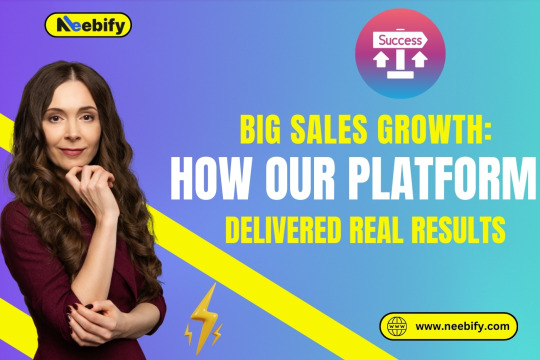
Neebify is the platform which uses automation coupled with CRM systems for delivering real and measurable results for businesses. It automates getting connection requests, messaging, and follow-ups in line with guidelines on LinkedIn. The other core features include automated outreach, CRM integration, targeting your audience, customized campaigns, and analytics or reporting.
There are high expectations to view LinkedIn automation as a step that can play an important role in today's sales strategy, including sending in connection requests, messages, and follow-ups at mass levels by streamlining the efficiency. In this case, it will make sure to produce even more qualified leads, consistency in engagement, scalability, and even super management of the data.
Yes, a mid-sized B2B software company had a case study that showed how Neebify transformed the entire LinkedIn outreach approach to remarkable sales growth. Neebify explained to the company that they could help it overcome the challenge of a small number of connections, which could not help scale, and a limited reach because their sales force had to send connection requests and follow-up messages manually. Neebify offered them a solution that would allow them to reach more prospects, keep leads engaged consistently, and connect their LinkedIn efforts with their CRM for better management of leads.
In conclusion, Neebify is the future of sales growth automation, as through good automation and proper CRM systems, its use can bring optimum results for businesses in the future.
A B2B software company used Neebify for automated LinkedIn outreach and its integration with their CRM. They used Neebify to send customized connection requests to industry decision-makers and influencers and then followed up automatically with a series of follow-up communications to nurture those connections and move people further down the sales funnel. They hooked up their CRM so sales were spending more time closing deals and less time wrangling data.
Neebify provided advanced filtering features that allowed the company to pinpoint leads of interest with precision based on title, industry, and company size. The company was allowed to create several campaigns on LinkedIn, targeting different aspects of the target audience.
Between three months, the company managed to realize an impressive 200% growth in sales opportunities, and conversion rates improved, leads were handled in a better way, less time spent at work not automated, and data-driven decisions made in a much more efficient way. Among the most outstanding ones was the plan targeting decision-makers in the tech industry where the acceptance rate of connection requests had reached as high as 150%.
By combining Neebify's LinkedIn automation tool with its integration into a CRM, it could potentially really get the sales of businesses sky-rocketing. This is due to the fact that every sales effort would scale while not dropping personalization and efficiency. One good example would be the case of the B2B software company where the right application of automation on a LinkedIn strategy could really reach new heights while bringing in significant, measurable results.
2 notes
·
View notes
Text
Best 10 Business Strategies for year 2024
In 2024 and beyond, businesses will have to change with the times and adjust their approach based on new and existing market realities. The following are the best 10 business approach that will help companies to prosper in coming year
1. Embrace Sustainability
The days when sustainability was discretionary are long gone. Businesses need to incorporate environmental, social and governance (ESG) values into their business practices. In the same vein, brands can improve brand identity and appeal to environmental advocates by using renewable forms of energy or minimizing their carbon footprints.
Example: a fashion brand can rethink the materials to use organic cotton and recycled for their clothing lines. They can also run a take-back scheme, allowing customers to return old clothes for recycling (not only reducing waste but creating and supporting the circular economy).
2. Leverage AI
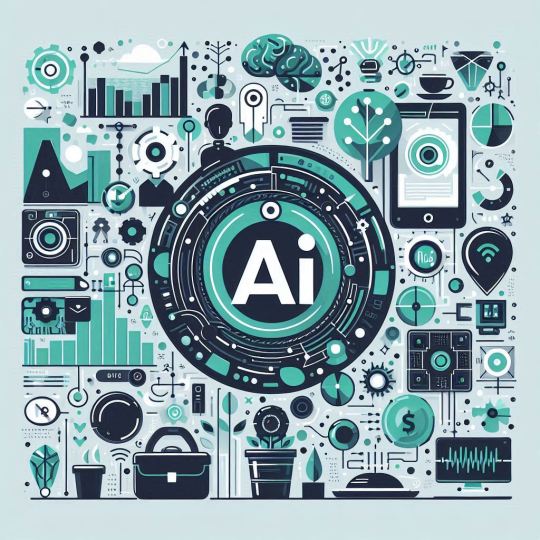
AI is revolutionizing business operations. Using AI-fuelled solutions means that you can automate processes, bring in positive customer experiences, and get insights. AI chatbots: AI can be utilized in the form of a conversational entity to support and perform backend operations, as well.
With a bit more specificity, say for example that an AI-powered recommendation engine recommends products to customers based on their browsing history and purchase patterns (as the use case of retail). This helps to increase the sales and improve the shopping experience.
3. Prioritize Cybersecurity
Cybersecurity is of utmost important as more and more business transitions towards digital platforms. Businesses need to part with a more substantial amount of money on advanced protective measures so that they can keep sensitive data private and continue earning consumer trust. Regular security audits and training of employees can reduce these risks.
Example: A financial services firm may implement multi-factor authentication (MFA) for all online transactions, regularly control access to Internet-facing administrative interfaces and service ports as well as the encryption protocols to secure client data from cyberattacks.
4. Optimizing Remote and Hybrid Working Models
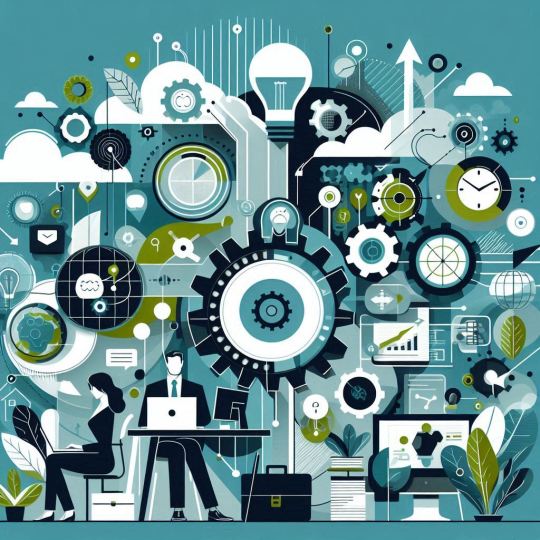
Remote / hybrid is the new normal Remote teams force companies to implement effective motivation and management strategies. Collaboration tools and a balanced virtual culture can improve productivity and employee satisfaction.
- Illustration: a Tech company using Asana / Trello etc. for pm to keep remote teams from falling out of balance. They can also organise weekly team-building activities to keep a strong team spirit.
5. Focus on Customer Experience
Retention and growth of the sales follow-through can be tied to high quality customer experiences. Harness data analytics to deepen customer insights and personalize product offers making your marketing campaigns personal: a customer support that is responsive enough can drive a great level of returning customers.
Example – For any e-commerce business, you can take user experience feedback tools to know about how your customers are getting along and make necessary changes. Custom email campaigns and loyalty programs can also be positively associated with customer satisfaction and retention.
6. Digitalization Investment

It is only the beginning of digital transformation which we all know, is key to global competitiveness. For streamlining, companies have to adopt the use advanced technologies such as Blockchain Technology and Internet of Things (IoT) in conjunction with cloud computing.
IoT example : real-time tracking and analytics to optimize supply chain management
7. Enhance Employee Skills
Develop Your Employees: Investing in employee development is key to succeeding as a business. The training is provided for the folks of various industries and so employees can increase their skills that are needed to work in a certain company. Employee performance can be enhanced by providing training programs in future technology skills and soft skills and job satisfaction.
Example: A marketing agency can host webinars or create courses to teach people the latest digital marketing trends and tools This can help to keep employees in the know which results in boosting their skills, making your campaigns successful.
8. Diversify Supply Chains

The ongoing pandemic has exposed the weaknesses of global supply chains. …diversify its supply base and promote the manufacturing of drugs in Nigeria to eliminate total dependence on a single source. In return, this approach increases resilience and reduces exposure to the risks of supply chain interruption.
- E.g., a consumer electronics company can source components from many suppliers in various regions. In so doing, this alleviates avoidable supply chain interruptions during times of political tensions or when disasters hit.
9. Make Decisions Based on Data
A business database is an asset for businesses. By implementing data, they allow you to make decisions based on the data that your analytics tools are providing. For example, sales analysis lets you track trends and better tailor your goods to the market.
Example: A retail chain can use data analytics to find out when a customer buys, and it change their purchasing policies. This can also reduce overstock and stockouts while overall, increasing efficiency.
10. Foster Innovation
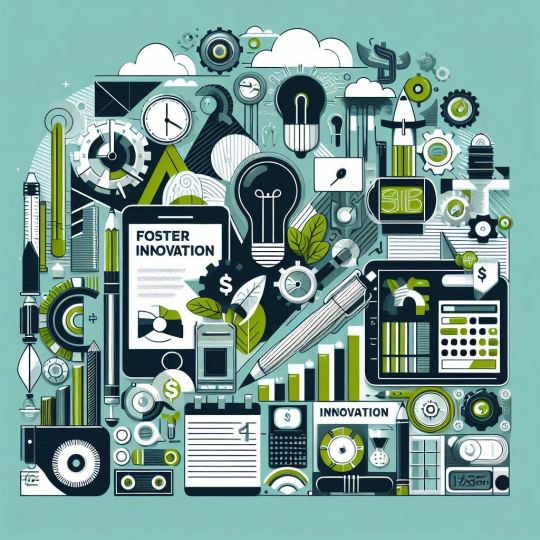
Business Growth Innovation is Key A culture of creativity and experimentation should be established in companies. Funding R&D and teaming with startups can open many doors to both solve problems creatively but also tap into new markets.
Example: A software development firm could create an innovation lab where team members are freed to work on speculative projects. Moreover, work with start-ups on new technologies and solutions.
By adopting these strategies, businesses can navigate the turbulence for 2024 and roll up market — progressive.AI with an evolving dynamic market, being ahead of trends and updated is most likely will help you thrive in the business landscape.
#ai#business#business strategy#business growth#startup#fintech#technology#tech#innovation#ai in business
2 notes
·
View notes